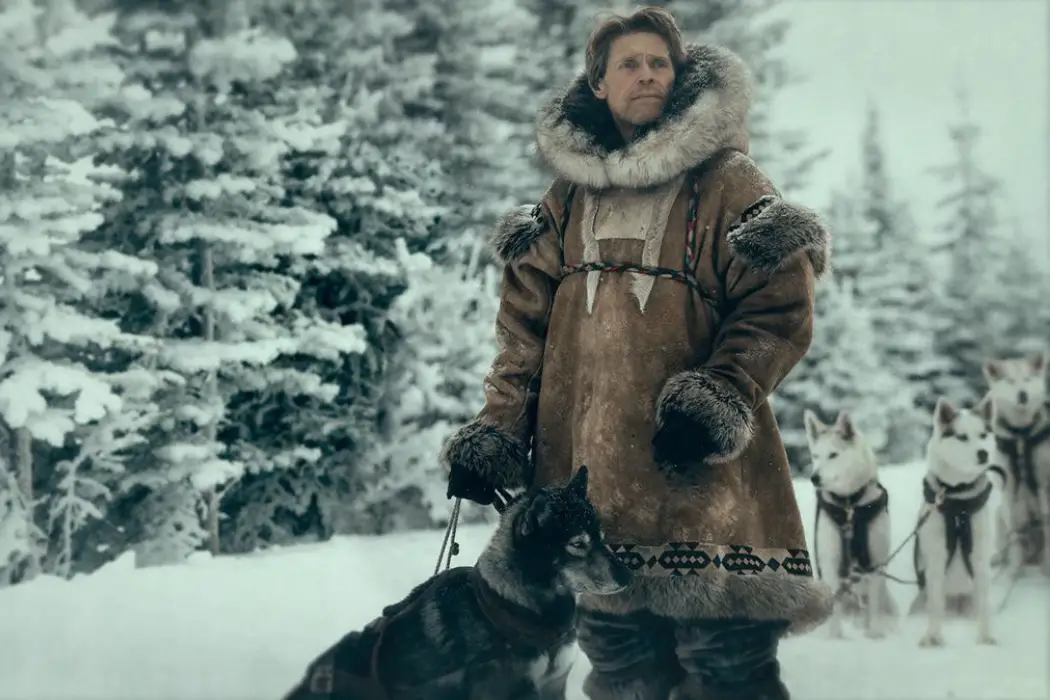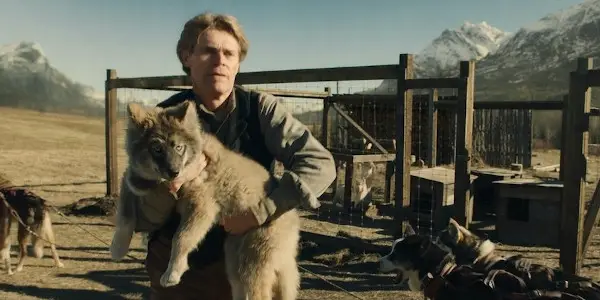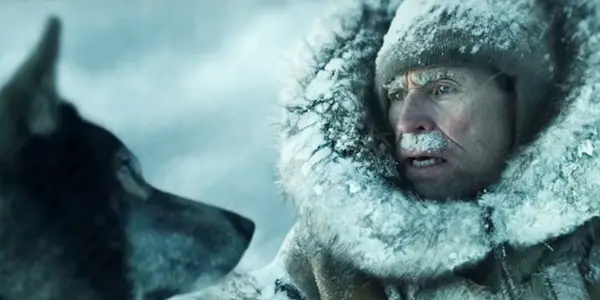TOGO: Vintage Heroes Don Fur

Luke Parker is an award-winning film critic and columnist based…
The best dog movies aren’t only about dogs, and neither is Togo, the Disney+ original whose stark white adventure retells that of the true canine hero behind the 1925 serum run. Directed by cinematographer-turned-filmmaker Ericson Core, the film boasts an affectionate and adjourning tale of resilience, courage, and love, centered around the symbiotic relationship between the titular pooch and its musher Leonhard Seppala (Willem Dafoe).
Also known as the Great Race of Mercy, the serum run, of which Togo spends an ample chunk of its time, involved the frosty, storm-breaching transport of antitoxins thorough 600 miles of unforgiving climate in a heroic attempt to squash a diphtheria outbreak in Nome, Alaska. As Tom Flynn’s screenplay has it, following well-populated, yet underreported accounts, while it may have been the dog Balto, who led the final stretch of the run, that got the fame and glory – not to mention a commemorative statue in Central Park soon after and his own animated big screen production in 1995 – it was Togo, the 12-year-old miscreant who charged through 264 miles of hellhound blizzard, that really deserves the praise.
The resulting hike at rewriting this etched-in-ice narrative is a simple, and well-executed film; a plight buoyed by the bond between its namesake and Seppala. While its most pressing journey may be that of their miracle quest for medical salvation, there is also something deeply spiritual and sentimental in witnessing two great partners, both well past their prime, nearing the end of their journey together.
The Tale Behind The Tail
Injected into the crisis, Togo begins drenched by the town’s pleas. Its children are getting stomped out by the sickness; technology in travel has not yet evolved to meet their needs; and time, by any measure, is running out. Unanimously, Nome’s leadership (most prominently its insecure mayor played by Christopher Heyerdahl) elects Seppala, a champion dog-sled driver, to embark on this perilous rescue mission.

Despite some initial skepticism, brought out of concern for his pups – when asked how bad he thinks the storm will be, his only response is “memorable” – and that of his wife (Julianne Nicholson), Seppala soon accepts the call. But as his dog sled first breaches the cusp of the storm, the film whistles away twelve years into the past; the dire situation then becoming one branch of the film’s dual timeline, the other being the trails of Togo’s puppy youth.
These past patterns consist of the recyclable, if adorable angst of young Togo, whose determination to lead constantly decimates the barriers of a kennel. Born as the runt with his own series of health problems and a relatively small figure, the pup was, at one time, a jarring nuisance for Seppala. But whenever the professional breeder – “they’re not pets, they’re not our friends…they’re work animals,” he grunts at one point – locks Togo away, time and time again, the dog manages to break through before finally impressing Seppala with his clear resolve.
The Wind’s Changed
While we all know that Disney would never even consider sponsoring this story had it ended in catastrophe, Togo still manages to conjure some truly thrilling dog sled sequences, honoring the occupational severity whisked within people like Seppala, who must trust the sense of their canine guides alone to muscle them to safety. Their snow-laced climate is relentless, frequently demonstrated throughout the film but most powerfully in two harrowing and pulsating scenes. In an effort to preserve the experience, all I’ll say is one involves the edge of a cliff, and the other involves the rapid crumbling of an ice-covered lake.

Dafoe, during all of this, is actually given the chance to spout off dialogue similar to that of his previous gig, The Lighthouse. While on the serum run, the actor, who reportedly learned how to operate a dog sled himself for the role, brings his own unique energy to the action, brandishing the snowy pathways with a pleasing sense of authenticity and power. That being said, Flynn’s early 20th century dialect doesn’t crossover as well when it attempts to lead Togo’s domestic drama. However, the performers Dafoe and Nicholson carry with them a strong enough dynamic to rustle through the clunks.
Conclusion: Togo
A long time ago, Disney used to produce films like Togo – sweet and simple quests saturated by friendship overcoming adversity – on a regular basis and dispatched them to a well-nourished and receptive audience. It may be safe to say that most households are populated by the joined memories of at least one Disney dog – be it Old Yeller, Air Bud, Lady, Tramp, Hound, or even the shaggy one – but now, in a box office market which rejuvenates itself on the release of tentpole productions, these simpler and noble efforts will be primarily designated to stream.

Perhaps, in the long haul, more people will get to experience Togo this way, but cinematically speaking, that’s an awful shame. Core’s fine, grainy exhibition of the Alaskan atmosphere is often breathtaking, as Seppala and his team are accompanied by a hauntingly beautiful wilderness that pays them no exceptions. The landscape achieved is one bred from artistic knowledge; Core, who aptly provided Togo its cinematography, often implores dazzling wide shots to capture the beauty of these snow-capped mountains. And, occasionally softening the edges of his frame, simultaneously achieves a vintage look while steering the audience through the important cogs of the story.
Hopefully it will continue to do so on an iPhone.
Have you had the chance to check out Togo? Do you think it deserves a theatrical release? Be sure to let us know in the comment section below!
Togo is available now to stream exclusively on Disney+.
Does content like this matter to you?
Become a Member and support film journalism. Unlock access to all of Film Inquiry`s great articles. Join a community of like-minded readers who are passionate about cinema - get access to our private members Network, give back to independent filmmakers, and more.
Luke Parker is an award-winning film critic and columnist based in the Baltimore-Washington metropolitan area. As an entertainment journalist, he has interviewed several members of the film industry and participated in some of its most prestigious events as a member of the press. Currently, he is working to obtain his bachelor’s degree in Mass Communication at Towson University.













